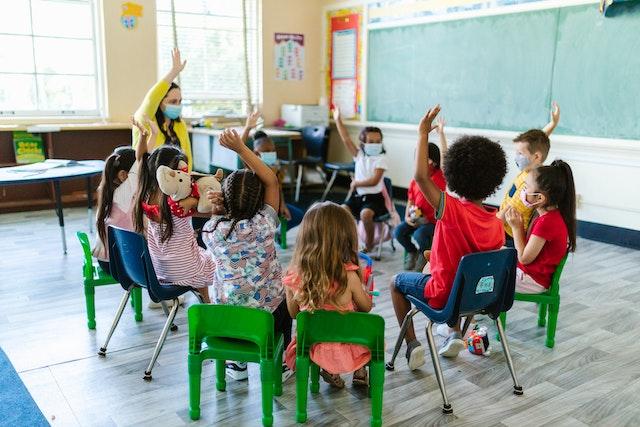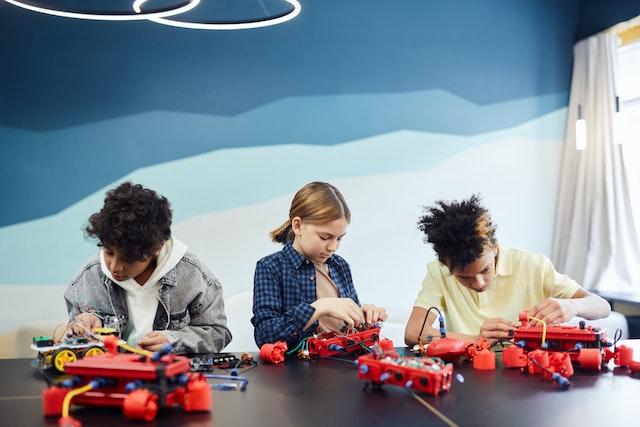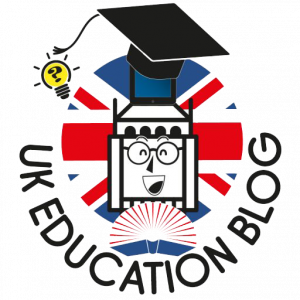Time and time again we have seen countless jobs get replaced by technological advancements with each revolution. Here we discuss how can schools prepare students for IT jobs.
Careers in information and technology can help children to future-proof themselves against further innovation and allow them to embark on a challenging and fulfilling journey.
We have teamed up with Taunton Independent School to discuss how schools can prepare students best for information and technology jobs.
As educators, we don’t just have the responsibility of producing the next generation of data scientists, developers, doctors, engineers, and key workers. We also have the duty of shaping children into brilliant young people that can fill the jobs that don’t yet exist.
While challenging, there are several ways that we can do this.
1. Create Innovative Learning Opportunities

All too often we hear ‘I don’t know’ and straightforward cookie-cutter answers. To help children become dynamic young people and the forward thinkers of their times, setting innovative tasks is essential. Not teaching children what they need to learn but teaching them HOW to learn. Let us explain.
In the real world, the problems that we face don’t have simple solutions that can be Googled or looked up in a textbook. They are complex and can be tackled in any which way. They require critical and outside-of-the-box thinking in order to make the correct decisions.
To help your students think innovatively, ask them open-ended questions that can be looked at from a range of different angles. Get them to brainstorm and let them take the lead in their own learning as opposed to setting traditional tasks.
In preparation for later life, get your students to stretch beyond the content taught in the classroom by promoting self-directed learning. This can help them to engage in deeper levels of thinking and teach them how to think creatively, critically, and pragmatically. You can do this by asking a young child about what water can do and allowing them to experiment. This is known as Montessori teaching.
2. Lessons on Artificial Intelligence

Schools across the world are helping children to get AI-ready with classes to prepare them for what is expected to be the 4th industrial revolution. The UK is thought to be trailing behind in comparison which has led to the release of a new initiative by the national center for AI in tertiary education.
There are many websites and online learning games and apps out there that you can introduce to your students and their parents to feed their curiosity and understanding of AI. Websites such as Machinelearningforkids.co.uk allow children to teach their computers how to play video games and explore pre-trained AI.
3. Coding Games

To get the best out of your students, find learning activities that engage. Coding games are a great way to do this which makes learning what would otherwise be a boring subject, fun and practical. Something that is particularly important when planning lessons for kinaesthetic learners.
Games that you can explore with your students are Algorithm City, Think and Learn: Code-a-Pillar, Daisy the Dinosaur, and Scratch JR which are all free to download on Google Play Store. Games like Algorithm City teach children about command sequencing, loops, and functions so that they can solve problems and earn gold. Others can expand your child’s knowledge of Javascript, Swift, and Python.
4. Arrange for More Project-Based Learning

The world of work calls for individuals that can work independently and cohesively in a team. Group work can open children up to new perspectives while teaching them how to collaborate with others as they would do in the field of tech through real-life experience.
Again, this should be exercised with tasks that are open to interpretation to be effective. This can help your students to develop thinking skills such as critical thinking, problem-solving, and creativity by giving them freedom of thought.
5. Field Trips

Experiential learning gives children the opportunity to solidify their learning with real-life experiences and the chance to talk with local experts and organisations. This can give children an insight into how the world works by offering a deeper level of understanding by allowing them to think about problems contextually. To help your students in their information and technology careers, you can arrange for school trips to a software and development agency or think tank organisation.
6. Stay Ahead of Developments

While we can’t predict the future, we can stay abreast of the latest developments in the job market and the skills needed for it to be filled. We pave the way for our students in the teaching that we deliver and better prepare them by working towards producing great leaders, inventors, and kind young people. So long as your teaching methods allow your students to build the four types of thinking skills needed to be dynamic and innovative, you have done your job as an educator.
Final Thoughts
Most educators will already work hard on exposing their students to more digital and tech skills-related learning materials, however, as this sector evolves at such a fast speed, it is difficult to remain on top of the latest trends in EdTech. Hopefully, we were able to inspire you to educate your students about the career skills needed in the near future.
Author Profile

- Shirley Owen is a blogger and writer who enjoys writing blogs on education, technology and general news. An avid reader, she follows all the latest news & developments to report on them through her articles.
Latest entries
 language learningJune 18, 2025From Beginner to Fluent: Your 6-Month English Learning Plan
language learningJune 18, 2025From Beginner to Fluent: Your 6-Month English Learning Plan early learningMay 16, 2025Boosting Young Brains: The Power of Puzzles in Child Development Explained
early learningMay 16, 2025Boosting Young Brains: The Power of Puzzles in Child Development Explained ExamsMay 1, 2025Mastering A-Level Economics: A Strategic Guide to Academic Excellence
ExamsMay 1, 2025Mastering A-Level Economics: A Strategic Guide to Academic Excellence student lifeApril 24, 202512 Best Study Spots in Liverpool Revealed
student lifeApril 24, 202512 Best Study Spots in Liverpool Revealed







